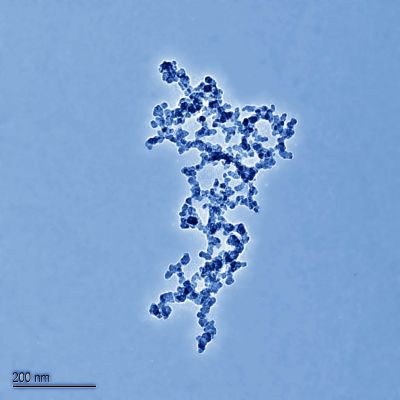Nanotechnology
has rapidly entered our lives, promising to revolutionise health care
and consumer products. The unique physicochemical properties of
nanoparticles make them ideal for numerous applications.
Experimental evidence indicates that nanoparticles cause
cytotoxicity, oxidative stress, genotoxicity and inflammatory responses,
all of which could lead to cardiovascular diseases. However, no
protective measures against nanoparticle-mediated injury have been
proposed.
Seeking to address this, the EU-funded NANOMEGA project investigated
the molecular mechanisms underlying silver nanoparticle and titanium
dioxide toxicity. The focus of the study was on oxidative stress and its
role in activating signal pathways associated with DNA damage and
repair. In addition, the consortium explored the impact of nutrition and
especially a diet rich in omega-3 fatty acids as a protective measure
against nanoparticle toxicity.
NANOMEGA fellow observed that silver nanoparticles upregulated
reactive oxygen species (ROS) within cells, a major contributor to
oxidative stress. The capacity of nanoparticles to bind metals coupled
to their surface chemistry could directly induce the formation of ROS.
Alternatively, nanoparticles could be causing toxicity by interfering
with the function of the ROS-producing NADPH-oxidases. With respect to
DNA damage, experiments helped identify which molecules are central for
repair following nanoparticle toxicity.
The key finding of the NANOMEGA study was the discovery that the
addition of the DHA fatty acid significantly reduced
nanoparticle-induced DNA damage. This was achieved by increasing the
expression of DNA repair enzymes and hence improving the overall
viability.
Taken together, NANOMEGA findings portray a picture of the toxicity
mechanism caused by nanoparticles. Most importantly, for the first time
interventions were proposed to minimise side-effects and nanotechnology
safety has been improved.
 EN
EN  CS
CS DE
DE ES
ES FR
FR HU
HU IT
IT PL
PL PT
PT РУ
РУ SK
SK TR
TR УК
УК AR
AR 中文
中文







